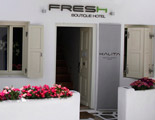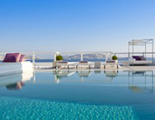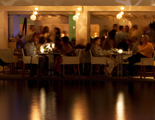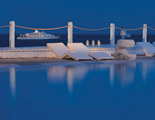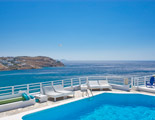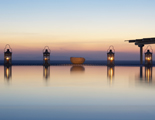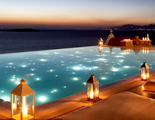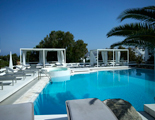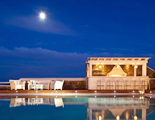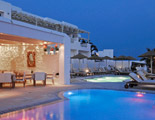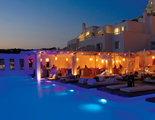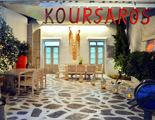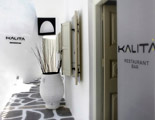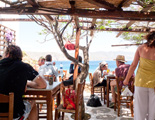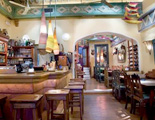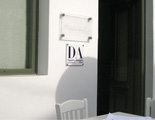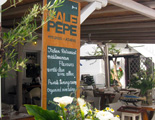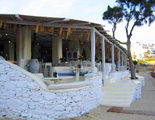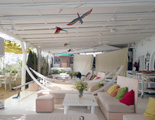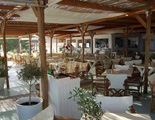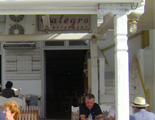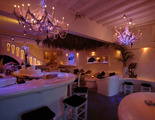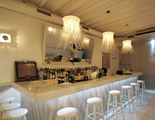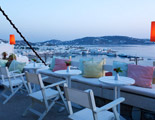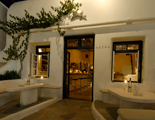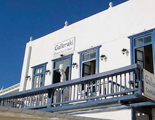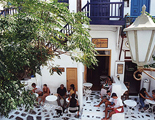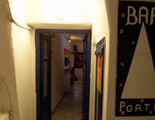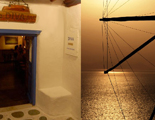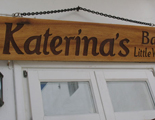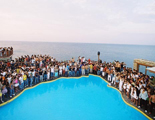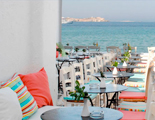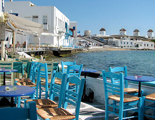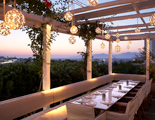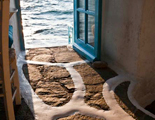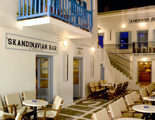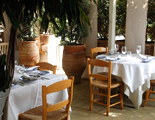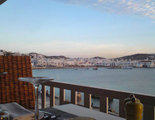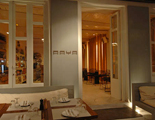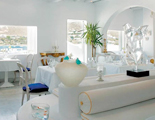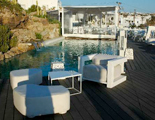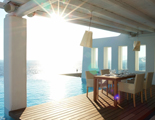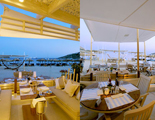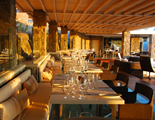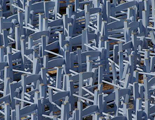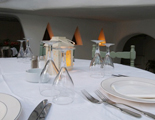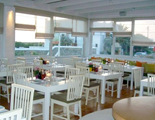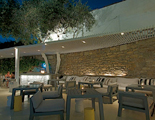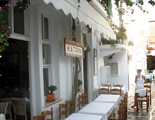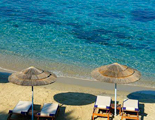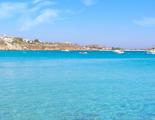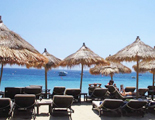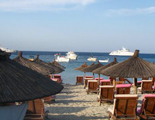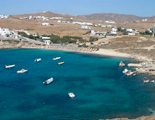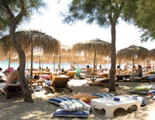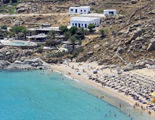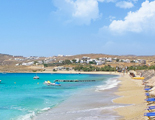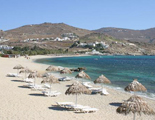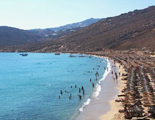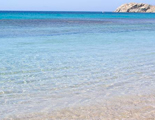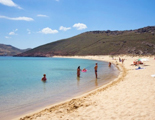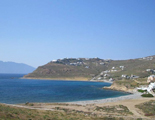 Mykonos Travel Guide
Mykonos Travel Guide
It is said that the island was named after the local hero Mykons, who was worshipped in antiquity and was considered to be a son or a grandson of the god Apollo.The island’s principal town is Mykonos town, also called “Chora”. Chora actually means “town’ in Greek and the Greeks always call a town Chora when the island happens to give its name to its principal town as well.
Archaeological findings show signs of the Neolithic tribe Kares on the island, dating back to 3000 years B.C However, it seems that the Ionians from Athens were the first ones to really settle in Mykonos in the early 11th century B.C occupying the island after throwing out its previous habitants.Delos Island was highly populated back then, which made Mykonos an important place for supplies and a transit spot when travelling out of Delos, only 2 km away.
In ancient times there were two towns on the island; In 490 b.c., the Persian generals Datis and Artaphernes made a brief stopover in Mykonos; It was a poor island with limited agricultural resources. People in the region were pantheists and worshiped gods like Dionysos, Dimitra, Zeus, Appolo, Poseidon and Hercules.
During the reign of the Roman Empire, the island belonged to the Romans and later formed part of the great Byzantine Empire. The Byzantines protected Mykonos against the Arabs in the 7th century and controlled it until the 12th century.
When Constantinople fell at the end of the Fourth Crusade (1204), Mykonos was occupied by the Ghizi overlord, belonging to the extended family of Dandolo, the Doge of Venice.The Catalans made a short appearance on the island, ransacking it in the years around 1292, until it was handed to the Venetians in 1390.Under Venetian domination in 1537, Mykonos was attacked by Barbarossa, the notorious admiral of Suleiman the Magnificent, and the Ottoman fleet gets installed on the island.
A situation of self-governing is imposed, supervised by Kapudan Pasha, the head of the Ottoman fleet, where a governor and a council of “syndics” are appointed, who always tried to keep a fair balance between the Venetians and Ottomans.The last Venetians withdrew definitively from the region in 1718, after the castle of Tinos fell in the hands of the Ottomans.
The Mykonians proved excellent sailors and tradesmen, which brought a great prosperity to the island and attracted colonies of immigrants from nearby islands and Crete, as well as regular pirate raids, until the late 18th century.During and after the “Orloff Insurrection”(led by the Orloff brothers, 1770-74), the island favoured by the profitable treaties, regarding the trade between the Ottomans and the Russian Empire.
When the Greek Revolution against the Turks broke out in 1821, the Mykonians played an important role and roused under the strong leading hand of the national heroine Mando Mavrogenous. Mavrogenous was actually a well-educated aristocrat raised with the most fervent ideas of the Enlightment and did not hesitate to take active part in the revolution, sacrificing all her family’s wealth to this great cause.
Mykonos formed part of the free Greek State since the first day that it was formed in 1830 and the sailing and merchant activity resurrected the island’s economy, consolidating trade relations with south Russia, Moldavia and Vlachia. Mykonian merchants travelled abroad and many of them even settled in other important commercial centres such as Constantinople, Smyrna, Alexandria, Livorno and Marseilles.
The island’s economy declined during the late 19th century, due to occurrences and events such as the opening of the Corinth Canal in 1904 and World War I. Many Myconians were amongst the Greeks that abandoned the island to find work in mainland Greece (mainly Athens and Piraeus) as well as in foreign lands of opportunities such as the US. Tourism as the answer to the local economy issue became apparent in the following decades, especially after the important excavations of the French School of Archeology began in Delos in 1873, bringing to light some very interesting findings.
Lovers of the Greek history and mythology were drawn to the region and started discovering along with the ancient ruins, also the virgin island of Mykonos and the famous Greek hospitality. It was so that in the early 30’s, many famous artists, politicians and wealthy Europeans were spending their vacation in Mykonos, attracting attention and putting the island on the map, so to speak.
Resurrecting after the catastrophic aftermath of World War II, Mykonos found its path back to growth and flourished as a very popular destination for the rich and famous during the 50’s. From then on, Mykonos has become the cosmopolitan island and famous tourist destination that we know it to be today. With its traditional architecture, the white-washed houses, the narrow streets “kalderimia” and the exuberant natural beauty that surrounds it, Mykonos remains a favourite amongst the most discerning travellers.
It is believed that the island was named after its first ruler Mykons, a local hero, who was considered to be the son or grandson of the god Apollo. There are various references to Mykonos in the Greek mythology.
Mykonos was supposedly where the battle between omnipotent Zeus and the fearful Titans took place. Also it is mentioned as the place where Hercules slew the Giants. The Giants were invincible while they stayed in the protected area of Mount Olympus. Hercules managed to lure them out of there and kill them on Mykonos.
Actually, it is said that the large rocks which are scattered around the island are actually the same petrified corpses of the Giants.
Delos in ancient Greek language is the opposite of “adelos” (invisible) and means clear, brought to light, obvious, apparent, manifest.
Greek mythology tells the legend of how the island of Delos appeared suddenly amidst the waves of the sea when Leto was looking for a safe place to give birth to her twins Apollo and Artemis. Leto was the daughter for Titans Koios and Phoebe, grandaughter of Uranus (Heaven) and Gaia (Earth). She was the titan goddess of the “unseen”, the hidden, but ironically enough she was so beautiful in sight that inevitably attracted the attention of Zeus.
Zeus turned into a quail, pursued Leto and made her pregnant with twins.
But, when time came to give birth, Zeus’ wife the goddess Hera became so jealous and angry that ordered for all land to disappear under Leto’s feet, so that she wouldn’t be able to find anywhere “under the sun” to give birth.
Leto first managed to stay on the small island of Rinia long enough to give birth to one of the twins, Artemis the goddess of hunt, wild animals and children, often depicted as a huntress carrying her bow and arrows. According to the story, Leto’s sister Asteria had also been pursued by Zeus but in her effort to escape she had fallen into the sea and become a rock, a floating little island. This is the island of Delos that suddenly appeared in front of Leto’s eyes and to which she crossed with the help of her new born baby Artemis.
There, with the help of goddess Eileithyia -goddess of childbirth and midwifery- Leto gave birth to the handsome Apollo, the god of light, after being in labour for nine days and nine nights leaning on a palm tree by the banks of river Inopos. It is said that, touched by the birth of his son which he witnessed from the top of Mount Kynthos, Zeus asked his brother Poseidon to fasten the little floating island to that exact position, so it would stop moving and thus become visible, apparent , “Delos”
The Cyclades were named after the word “kyklos”, meaning “circle” in Greek (a derivative is the word “cycle” in English), either because in the minds of the Ancient Greeks the formed an imaginary circle around the sacred island of Delos, birthplace of god Apollo, or because the strong winds in the area used to oblige the ships to turn around themselves and make circles in the water.
Another interesting version according to the Greek mythology is that the Cyclades were named after the nymphs by the same name that god Poseidon transformed into rocks during a rage fit.
Location: Mykonos Town
Starting price per night: 75.00 €
Freshness in Hospitality
Location: Agios Stefanos
Starting price per night: 270.00 €
Grace and luxury in Mykonos
Location: Mykonos Town
Starting price per night: 165.00 €
Pure elegance at its finest in Mykonos town
Location: Ornos Bay
Starting price per night: 232.00 €
Ethereal romance in a Leading Hotel.
Location: Kalo Livadi
Starting price per night: 150.00 €
MIDSUMMER NIGHT'S DREAM IN MYKONOS
Location: Mykonos Town
Starting price per night: 150.00 €
THE BEAUTY OF SIMPLICITY IN MYKONOS
Location: Mykonos Town
Starting price per night: 230.00 €
Luxury design and gastronomy in Mykonos
Location: Mykonos Town
Starting price per night: 125.00 €
Authentic yet modern hideaway in the heart of Mykonos
Location: Kalafatis
Starting price per night: 100.00 €
A tranquil Sea Front retreat in Mykonos
Location: Platis Gialos
Starting price per night: 150.00 €
Boutique hotel with sea views in Mykonos
Location: Tagoo
Starting price per night: 250.00 €
Ultimate indulgence in Mykonos
Mykonos town -or Chora- is the capital town of Mykonos island where one can find the most important sightseeing spots, the most commercial streets and shops, the most popular bars and restaurants. Chora’s architecture is typical of Cyclades, all white-washed cubic houses with blue windows, charming narrow streets with pebble-stoned pavements and little white chapels with sky-blue cupolas. A walk through Chora, the old port, Little Venice and the Castle, will put in your way the most significant places to visit in Mykonos and will allow you to take the most characteristic Mykonos polaroids!
Mykonos Windmills, with their distinctive form and white figure, have been a landmark of the island since the 16th century. Due to the strong winds that have always been present in the region, as well as the privileged geographic position of the island as a trade crossroad, Mykonos used to be a major supplier of refined grain and flour. What used to be a main part of the island’s activity and a force of the local economy, became a sightseeing attraction after the mills stopped working around the middle of the 20th century, courtesy of the industrialization.
There used to be a total of 20 windmills on the island, most of them built in or around the main port, the town Chora and Alefkantra neighbourhood. Around half of those were still in good function during the first decades of the 20th century and today only 7 still stand as proud reminiscent of their past. Geronimos Windmill (of private property) remained in operation until 1960’s and is still today in very good shape with a great part of its machinery intact.
"Lena's House" is open daily from 1st April till 30th October, between 19:00- 21:00 Telephone: +30 22890-22591, 22748. No admission charge.
Gifted by G. and M.Drakopoulos on 1970, "Lena's House"( a branch of the Mykonos Folklore Museum) is situated at Tria Pigadia in the town of Mykonos. It is an authentical middle-class Mykonian residence of the 19th century and represents a typical internal arrangement of space. It contains a spacious drawing room, two bedrooms and two courtyards and a dovecote. Of particular interest are the rich antique furnishings, such as large frames containing splendid prints, the tapestries, the wood carvings, old mirrors, painted plates, etc. It was named "Lena's House" after it's last owner Lena Skrivanou."Lena's House" is open daily from 1st April till 30th October, between 19:00- 21:00 .Telephone: +30 22890-22591, 22748. No admission charge.
The Museum is open every day from 8:30 a.m to 3:00 p.m, except Mondays and on major public holidays.
The Archaeological museum of Mykonos is located in Mykonos town next to the harbour and is home to marble sculptures, ceramics, jewels and utensils, all findings from the excavations in Delos, Rhinia and Mykonos itself. Built in 1900, the museum was initially destined to house the findings from the excavation of the “purification pit” in Delos dating from the 5th century and the necropolis of Rhinia. In the winter of 426/425 b.c, the Athenias decided to “purify” the island of Delos.
They opened up all the tombs on the island and transferred all remains of the deceased and all offerings buried with them to a large pit in Rhinia. Then they declared Delos a sacred island and said that no one was allowed to be born or die on Delos. Pregnant women, citizens struck by serious illness or injury and old people were to be moved to Rhinia also. The “Purification Pit” was discovered and excavated by Dimitris Stavropoulos in 1898-1900 and all findings are exhibited in the museum.
The museum is also famous for the great collection of vases, representative of the distinctive Cycladic ceramic art, some of which date back to the Geometric period back to the 6th century b.c. A special reference has to be made to the “Pithos of Mykonos”, a 7th century vessel with relieved decorations representing scenes from the Trojan wars.
Open from April to October 4:30 to 8:30 p.m. daily except Sundays.
Located in the Venetian castle (called Kastro), the Folklore Museum of Mykonos was founded on May 1958 and is housed in the 18th century house of a sea captain and displays a rich collection folklore items. There are six main exhibition halls which house collections of antique furniture, Byzantine icons, Folkloric ceramics, historical commemorative plates, decorative prints and gravures, as well as embroidered and hard-woven fabrics, locks and keys, weights and measures, a lovely collection of model boats, and other historical artifacts. There are also import archives of manuscripts and printed matter, photographs, maps and a significant library.
Open, April to October, daily, 10:30 a.m. to 1:00 p.m. and evenings from 6:30 to 9:00 p.m.
Displays models of a collection of ships from the pre-Minoan period through to the 19th century and nautical and ancient artifacts related to the history of shipping on Mykonos. Located by the Three Wells, next door to Lena’s House, this museum displays scale models of various rowing boats, sailing vessels and steam-powered ships which, in turn, from Prehistoric times until the present, have traversed the Aegean.
Also there is a rich collection of maps and other engravings can be seen a collection of reproductions of ancient gravestones, carved with sea-themes; there, as well, is the tower with the mechanism of the Armenisti Lighthouse (1889). The “EVANGELISTRIA”, a traditional sailing vessel belonging to the museum, is moored every summer in the old harbor where it may be boarded by interested visitors.
Between Kastro and Skarpa, on the east side of Mykonos harbour, there lies one of the most picturesque places in Greece. Alefkantra, also known as Little Venice, was built around the mid 18th century as a neighbourhood for rich merchants, sailing captains and boat owners. During pirate raids, very popular at the time, Little Venice was used for sailors to quickly load and unload goods onto the boats, and the narrow streets were made with a maze-logic in order to confuse the pirates that managed to set foot on the island!
With a very characteristic architecture, wooden balconies that hang over the waves, colourful walls and a very privileged view of the sun setting on the sea, Little Venice has inspired over the years countless romances and works of art, as no soul can resist the beauty of this scenery. Some of the old houses are now bars, tavernas and clubs, where visitors can enjoy the sunset sipping on their favourite cocktail, and a few remain as private residences.
One of the “animate” attractions of the island, and a total celebrity in Greece and abroad, Petros has been the official mascot of Mykonos since 1954, when a storm obliged this pelican to leave behind its migrating plans and settle on the island. A favourite amongst locals and tourists, Petros was deeply mourned after its death around 1985, and soon was replaced by a proud successor. In the meantime, Jackie Kennedy had donated a female pelican named “Irini” to the island, for Petros to have companionship and in later years another young pelican by the name of “Nikolas” fell on the island and made it its home. Nowadays, there are 3 pelicans running around the island, posing for tourists’ snapshots only when they feel like it!
Paraportiani Church is one of the most interesting architectural structures in Greece, located near Mykonos harbour entrance. This peculiar construction is actually a complex of 5 churches. The first 4 were built between the 14th and the 17th century, forming a base on top of which the 5th one, Panagia Paraportiani (dedicated to Virgin Mary) was then built. The name Paraportiani means “the side door” and refers to the fact that the original church was next to the north-west side door of the medieval walls that used to surround and protect the “Kastro” ( the castle area), the old town. An emblematic monument of Mykonos, the Cyclades and Greece, Paraportiani church is responsible for some of the most idyllic pictures ever taken on the island!
The small island of Delos, birthplace of the god Apollo and a sacred land according to the Ancient Greeks, is one of the most important archaeological sites in the country. Situated at only 2 km from Mykonos (less than half an hour by boat), Delos remains under the jurisdiction of Mykonos for administrative matters and has been declared a monument of World Heritage by UNESCO since 1990.
Delos can only be accessed from the main harbour of Mykonos, with little boats “kaikia” that make daily excursions. However, no one is allowed t stay on the island after the sunset without a written permission. The guided excursions on the island and around the archaeological sites usually last 3 hours and the last boat from Delos back to Mykonos leaves at 3 o’clock in the afternoon. Make sure you catch it!
The Armenistis Lighthouse is located at the north-western side of Mykonos and it was built in 1891 after the tragic sinking of the English steamboat VOLTA in 1887, when 11 members of the crew drowned. Overlooking the narrow pass that separates the island of Mykonos from the island of Tinos, it is indeed beautiful scenery to visit, due to its location high up and the unique view that it offers.
The Lighthouse is an octagonal cylindrical tower built out of stone, with a lantern, a gallery, and a total height of 19 meters (62 ft). Its focal plane is 184 meters (604ft) with a white beacon that flashes every 10 seconds. The original lens was a Sautter Lemonier lens that was actually awarded with a prize at the World Exhibition in Paris and remained in place and working until 1983. Nowadays, it is on display for the public at the yard of the Aegean Maritime Museum in Mykonos Town (Tria Pigadia location).
The Lighthouse is located at 6 km from Mykonos town and can be reached by taking the coastal road towards the north, passing by Agios Stefanos village (follow the signs towards Agios Stefanos village, not the Agios Stefanos beach), continue towards Houlakia Beach and follow the little street towards the lighthouse. The amazing view of Tinos island opposite will reward you...
Location: Mykonos Town
A Pirate Ship on Land
Location: Mykonos Town
Location: Ornos Bay
Location: Tagoo
Climate
The climate in Mykonos is characterised by very hot and dry in the summer and quite mild in the winter.
Temperatures in July and August can range from 30ºC (86ºF) during the day and down to 22ºC (72ºF) at night.
Sunglasses, hats and a generous handful of sun protection cream are a must-have / must-use during your Mykonos vacation.
But, as strong winds called “meltemia” can be a regular phenomenon in late summer, especially in August, make sure you also bring a sweater.
Telephone
National prefix for Greece is +30 if you are calling from abroad
All numbers in the capital Athens start with 210 and are followed by 8 digits (e.g 210 3227400)
Area Code for Mykonos: 22890
If you wish to call abroad, you have to start by dialing the other country’s national prefix (i.e Germany is 0049, England is 0044 etc.) and continue with the area code and the number where you wish to call.
Currency
Euro €
Euro Coins:
1 and 2 euro coins (gold and silver color)
10, 20 and 50 cents (gold color) 1, 2 and 5 cents (copper color)
1 euro = 100 cents/centimes
Euro Bank Notes: Are available in 5, 10, 20, 50, 100, 200 and 500. It is not always easy to receive change for 200 and 500 Euro Notes
BY AIR
Mykonos National Airport (JMK) is located at 4 km from Mykonos town (Chora) and it can take about 15 min. by car to cover that distance. There is no public bus operating on this route and the most common way to reach Mykonos town from the airport is by taxi. Taxis can be found waiting outside the airport.
Mykonos National Airport Tel.: +30 22890 79000/ Fax: +30 22890 27489
Athens International Airport Elefterios Venizelos www.aia.gr
Olympic Air: For accurate timetables and tickets costs visit the Olympic Air website: www.olympicair.com.Tel 8018010101/ (+30)2103550500
Office at Mykonos Airport Tel +30 22890 22327
Aegean Airlines: For accurate timetables and tickets costs visit the Aegean Airlines website www.aegeanair.com. Tel: 801 11 20000/+30 210 6261000
Office at Mykonos Airport Τel.: +30 22890 28720/ Fax: +0030 22890 28730
Athens Airways: Athens Airways is a new charter airline flying from Athens to Santorini during the summer season www.athensairways.com. Tel.: 801 801 4000/+30 210 6696600
BY BOAT
Mykonos Island features two ports; the old Mykonos Harbor, where arrive all the ferroes and there is also the New Port of Tourlos, mostly used for Cruise Ships.
There are boats, ferries and high speed ferries to Mykonos departing from Athens (Piraeus Port and Rafina Port), Thessaloniki, as well as other Cyclades Islands, Dodecanese Islands and Crete.
The main port to take you to Mykonos from Athens is Piraeus, but there are also ferries departures, especially high-speed ferries, from the port of Rafina, which is closest to the Eleftherios Venizelos International Airport.
To reach Mykonos by sea, there are two types of ferries; the high-speed ferry which takes approximately 2h30 (from Rafina Port) and the normal ferry which is much slower and takes approximately 5 hours.
You can also travel to Mykonos by ferry from/to main Cyclades Islands.
Blue Star Ferries Santorini (normal ferry) For accurate timetables and tickets costs visit the Blue Star ferries website www.bluestarferries.com
High Speed Ferry Santorini (fast ferry) For accurate timetables and tickets costs visit the Hellenic Seaways website www.hellenicseaways.gr
LOCAL BUSES
http://www.ktelmykonos.gr (KTEL)Tel + 22890 23360
Departure points: Agios Stefanos and the New Port, next to Remezzo departures to Ano Mera, Elia, Kalafatis and from Fabrika departures to Platy Gialos, Paraga, Agios ioannis, Ornos, Paradise beach.
TAXI SERVICE
Taxis in Mykonos are grey in colour. They can be hailed on the street or arrive by appointment.
Radio Taxi Service Tel.: +30 22890 23700/+30 22890 22400
RENT A CAR OR MOTORBIKE
Renting a car or a motorbike to get around is common practice in Mykonos and there are many such agencies operating at the airport, the harbour, Mykonos town, as well on certain beach areas like Platys Gialos and Kalafatis.
BANKS & ATMs
If you need a bank in Mykonos, you will find most of them in Chora but also in the new ring road. If you need an ATM, there are plenty of them all over the Island of Mykonos. Note that all credit cards internationally recognized are accepted in most of the Island’s restaurants, bars and shops.
Banks opening hours: Monday to Thursday: 8.00 - 14.30 Friday: 8.00 - 14.00
MONEY EXCHANGE
Banks exchange all major currencies in cash, travellers’ cheques or Eurocheques; the commission is lower for cash. Post offices exchange cash but not travellers cheques, and usually charge lower commissions than banks. Travel agencies and larger hotels change cash and travellers cheques but usually charge higher commissions than banks. Banknote exchange machines can be found in most tourist areas.
POST OFFICE
The Greek post is called ELTA and you can find the main post offices of the Island in Fira, Emporio and Oia. Also, there are postal agencies in Pyrgos, Kamari & Perissa. Post Boxes in Greece are YELLOW for normal post, usually with 2 slots for INTERNAL POST (meaning inside Greece) and post for ABROAD. RED Post Boxes are rarer and they are used for URGENT mail. REGISTERED mail is always handled and given a receipt for at the POST OFFICE.
Post officer in Mykonos Town Tel.: +30 22890 22238
POLICE STATION
In Mykonos Town, near Lakka Square Tel.: +30 22890 22716/ +30 22890 22235
MUNICIPALITY OF MYKONOS
In Gialos - Αkti Κabani Tel.: +30 22890 22201/+30 22890 23990
• Tourist Police: +30 22890 22482
• Port Authority: +30 22890 22218
• Weather Forecast: 14944
• ELPA (car breakdown): +30 22890 24836
INTERNATIONAL PRESS: +30 22890 22238
You can find International Press in Mykonos town, near the church of Agia Kyriaki.
• European Emergency Number 112
• Police 100
• Fire Department 199
• Ambulance 166
HEALTH
• Health Center (public) at Argiraina: Tel +30 22890 23998 /
+30 22890 23994
• Health Center (private) “Mykonos Health” at Dexamenes:
Τel +30 22890 27407/ +0030 27464 - 24210
• First Aid Mykonos Town: +30 22890 22274
• First Aid Ano Mera: +30 22890 71395
• Airport Health Center: +30 22890 23998 / +30 22890 23994
• Mykonos town: Tel +30 22890 23770
• Ornos beach: Tel +30 22890 25163
• Ano Mera: Tel +30 22890 71112
Agios Ioannis is one of the best places to be when the sun goes down, for an enticing sunset view. This is where the famous 80’s English film "Shirley Valentine" was shot. The beach is divided into two parts, separated by rocks. On one of the two sides, there are umbrellas and sun beds available for rent. The water on the beachfront is shallow enough for children to play in, and there are a few tavernas close by for lunch. Not extremely protected from the strong north winds that blow in the Cyclades, but rather calm on most days. Parking space is available, but this beach can be reached also by bus.
A perfect family beach, only 2 km from Mykonos town, with easy access and a variety of facilities, Ornos beach is located on the southwest corner of the island and has developed almost into a full-size beach community. The beach is extended and sandy, with a lot of space and umbrellas and sunbeds available for rent. Surrounded by a large choice of accommodation choices, apartments, hotels and villas, on Ornos beach one can also find many bars, cafes, tavernas and restaurants, as well as all kinds of shops, super markets, a pharmacy, butcher’s, grocery store etc. There is frequent bus service to and from the beach, as well as a regular boat service to other beaches and to Delos and Rhenia islands.
Psarou is guarded by locals and vip visitors as a tranquil beach destination, where crazy partying is frowned upon! It is actually an attractive -not too small, not too big- beach with clear waters, umbrellas and sun beds available for rent and a place for boats and private yachts to anchor. Psarou beach has a restaurant, a traditional taverna, a cafe-bar, and even a sushi bar for the most demanding! Also, water sports lovers will not be disappointed, with the extra plus of a scuba diving centre right at hand. The beach can be reached by local bus (bus leaves you off at Platis Gialos, a short walk away from Psarou), by car or motorbike (prepare to drive down a steep slope), as well as by boat leaving from Ornos beach.
Platis Gialos is actually an extensive beach community, with plenty of space and umbrellas/sun beds available for rent. Surrounded by hills, it remains protected from the strong winds, and offers full-scale facilities such as a water sports centre (with water ski, jet ski, banana boat, and all kinds of water toys), restaurants, souvenir shops, beach bars, as well as many hotels, apartments, rooms and villas to rent. It is a very convenient, family-friendly beach, with a sandy and shallow shoreline for children to play safely as well as a life-guard on duty. Located on the southern side of the island, Platis Gialos is connected by boat with other southern beaches -such as Paraga, Paradise, Super Paradise, Agrari and Elia- and can be reached by regular bus service from Mykonos town. Also from Platis Gialos, one can easily reach Agia Anna beach and Paraga beach on foot. If you are thinking of using your rental car or motorbike, keep in mind that parking space is rather limited.
Agia Anna is a small hidden beach, only a few minutes walk from Kalafatis beach and takes its name after the tiny chapel of St.Anna where locals enter to light a candle. It is an alternative to the crowded southern beaches, rather protected from the strong winds and offering a slice of real fishermen’s life, as one can find traditional fish tavernas, local fishermen’s houses and even a boat launch for their fishing boats on the left part of the beach. In Agia Anna, one can find a few sun beds and umbrellas for rent (mostly on the right side of the beach), as well as a choice of restaurants, tavernas, rooms to let and a hotel. The two rocky hills floating in the sea between Agia Anna and Kalafatis beach are called Divounia ("two mountains" or "Aphrodite’s tits", as locals call them). This beach is accessible by car -there is a small parking space-, motorbike or the local bus service (remember to get off at the stop right before Kalafatis beach). From Agia Anna, one can walk to Platis Gialos and Paraga Beach.
Contrary to its name -which means "a poor house or a favela" - Paraga is actually one of the first clothes-optional beaches in Mykonos, made famous by the hippie generation in the 70’s and hugely popular ever since. A very picturesque spot with a mixed crowd, party atmosphere and a much celebrated beach bar-restaurant where the music can get rather loud! The beach is sandy, the water is clear, there are umbrellas and sun beds available for rent and a shallow shoreline for children to play in. Around the beach, one can find rooms to let, hotels and apartments, as well as Mykonos Camping. Paraga beach can be reached by local bus service from Mykonos Town, by boat from Platis Gialos and Ornos, or by foot from Paradise Beach (only 10 minutes walk). Depending on the season, the local bus takes you directly to Paraga or, alternatively, you have to get off at the bus stop for Paradise beach and walk. Parking is free for customers of the taverna and the beach bar, the rest have the option of paying a fee at the private-owned parking area on the right side of the beach.
Universally renowned and featuring in the most wild summer photos on facebook, Paradise beach is probably the most popular beach on Mykonos island! A predominantly young and multicultural crowd parties all-day and all-night long on this beach, the alcohol is abundant, the dance music is loud and there is always some special event or party happening. Sun beds and umbrellas for rent, a restaurant, mini market, snack bars and shops are available, as well as a lifeguard service and a big water sports and scuba diving centre offering water ski, jet ski, banana boats, pedal boats and canoes, water toys, banana boats, snorkeling, bungee catapult, beach horseriding...you name it! Paradise Camping on the same beach, is highly popular with campers for it is located right behind the beach under the shade of the trees and is offering a choice of well-organized accommodation in rooms, apartments, tents and beach cabins, to please all. Paradise beach can be reached by regular bus service form Mykonos town, by boat from Platis Gialos or Ornos bay, by car or motorbike, or by foot from Paraga Beach (a 10 minute walk).
Super Paradise is considered "the" party scene and is extremely popular with the up, hip, trendy, gay and celebrity crowds. Several beach bars and pool bars dominate the scenery, but it is still a very nice sandy beach with clear water where one can relax during the morning and enjoy swimming. There is tolerance towards nudism, umbrellas and sun beds are available for rent and there are also showers on the beach. Late afternoon is when the party usually begins. The whole beach becomes a dance-club with plenty of alcohol to go round and very loud music! The combination of the beautiful rocky scenery, the vivid atmosphere and the sense of privacy with limited access that it offers, makes Super Paradise a very popular spot. There is no regular bus service to Super Paradise, but it can be reached by car or motorbike - the road downhill can get quite steep- and by boat from Platis Gialos beach or Ornos beach.
Agrari is a quite, clothes-optional, medium-size beach with pebbly sand, umbrellas and sun beds available for rent, a nice beach bar and a water sports area also. There is also a hotel right on the beach and a traditional taverna only a short walk away. Agrari attracts a mixed crowd of Greeks and tourists and can be reached by car or motorbike (make sure to admire the stunning view from up the hill just before reaching the final turn), by boat from Platis Gialos or Ornos bay, or by foot from Elia Beach, as there is no direct bus service to Agrari. The two small beaches that lie between Elia beach and Agrari beach, are also a good option, and especially frequented by a gay crowd.
Kalo Livadi ("good valley") is actually located at the end of a long valley, and is really a long sandy beach, ideal for a tranquil relaxing day. The shoreline is shallow enough for children to play in and there is also a water sports area where you can rent a paddle boat or a kayak for a ride. Kalo Livadi is very popular with Greeks and especially families, as there is also a good offer of beach accommodation -hotels, apartments, studios etc- and quite a few tavernas, beach bars and restaurants. The rock you see opposite is Kalafakiona, where lobsters go to hide from the local fishermen! Kalafatis is accessible by regular bus service, although you would have to get off just before the big turn towards Elia beach and walk a good 10 minutes downhill. It can be reached also by car or motorbike, via the road to Ano Mera village.
The absolute haven for wind-surfers and wind-surfing fans, Kalafatis beach on the eastern side of Mykonos is favored by the winds, has its own wind-surfing school -also renting the necessary equipment- and is frequently the setting of organized competitions. For those who are not particularly fond of wind-surfing, there is always the beach-volley court, the water sports area and a diving centre that organizes excursions to the two little islands nearby. Sun beds and umbrellas are available for rent, but there is also great shade from the trees where the sand ends. There are quite a few accommodation choices, such as hotels, apartments and rooms to let, as well as plenty of traditional tavernas for nice seafood, a beach bar, a mini market for supplies, a pizzeria and a few other cafes and restaurants. Kalafatis beach is easily accessible by regular bus service from Mykonos town and by car or motorbike.
The largest of all the south beaches, Elia (meaning olive tree) is a golden sandy beach, quite cosmopolitan and loaded with accommodation and dining choices. Inviting a mixed crowd, at times predominantly gay, Elia beach is fully developed, with umbrellas and sun beds for rent, bathrooms and showers available, as well as a water sports centre at hand. Elia also hosts many hotel units, family-oriented hotels and the island’s only water park at walking distance. Certain sections of the beach closer to the right side facing the sea are also permissive to nudism. If you continue to the far right, over the rocks heading towards Agrari beach, one can find two little beaches that are very popular meeting spots for the gay crowd. One of the most easily accessible beaches, Elia can be reached by normal bus service from Mykonos town and a regular boat service from Platis Gialos or Ornos.
A small, quite undeveloped, peaceful beach, Lia is a beach with sand, pebbles and rocks to lie on and is extremely popular with Greeks and locals. Lia is quite far away from Mykonos town, after the village of Ano Mera, and can be reached only by car or motorbike -as there is no bus service- which is probably what keeps it so paradisiacal. There are umbrellas and sun beds for rent, as well as a beach bar and a few tavernas to choose from.
A large though undeveloped beach, Ftelia remains a favorite amongst wind- surfers for its smooth sand and wild winds. No umbrellas or sun beds, but a few accommodation choices facing the beach and tavernas where to grab a meal are actually available. The sense of open space is of great value, although relaxing as such on the beach is not always easy because of the blowing winds. The bus will leave you on the main road and a 10 minute walk will take you down to the beach. Free areas where to leave your car or motorbike can be found around the beach.
Panormos beach is a remote and undeveloped sandy beach on the northern side of the island that can get a little too windy when the north wind blows, but is perfect on the other hand when the southern winds attack. Nudism is common and acceptable, especially on the right part of the beach, whereas at the same time Panormos is also quite popular with families that usually stay on the left part of the beach, where the beach bar, the taverna and a hotel with a pool all lie. Panormos beach is on the way to Agios Sostis, but no bus service is available, although it can be approached by car and motorbike.
One of the most remote beaches of the island, Agios Sostis has been able to save itself from over-development and remains today an unspoiled, clothes-optional heaven. If you want shade, make sure you bring your own beach umbrella, as there are no umbrellas or sun beds for rent. Access is limited, as there is no bus service available. Take the road beyond Panormos Beach (the road is bumpy and rough), leave your car on the road and walk down the hill (parking space is limited). The footpath leads you right onto this sandy and pebble bay. Being a northern beach and all, Agios Sostis bay is rather protected from the strong northern winds. On the footpath leading you back to the main road, you will see a little tavern with a garden, next to the small church of Agios Sostis (Saint Sostis, patron and savior of all sailors) giving its name to this area. This is the perfect place to end a day’s swim with some nice food and good wine. From the taverna, there starts another footpath leading to a small secluded beach, right between Agios Sostis and Panormos. What used to be a secret isn’t anymore, so this tiny stretch of land can get pretty crowded in the summer. However, you will discover that is well worth it!
One of the very few pebble-beaches on Mykonos, Houlakia beach takes its name from the beautiful, smooth stones that cannot be found anywhere else. Xoulakia Beach natural environment is now a protected area and taking pebbles away from the beach is absolutely forbidden! The beach is divided into two parts. Facing the sea, the lefts side contains a small sandy area, where one can find sunbeds and umbrellas for rent as well as a family-owned hotel and taverna. On the right side, one can follow the footpath along the top part of the beach to admire the enticing view of this pebbled carpet, with Delos island appearing behind and the sun setting in the background.The left side can be reached by car and motorbike, via a path off the main road, at the end of which one can also find parking space. By bus, one can get off at the Agios Stefanos beach bus stop and walk the 1 km distance to Houlakia.
Agios Stefanos beach was named after the little chapel of Saint Stephen, built on one end of the bay. This is a large, family-friendly, sandy beach to please all! Located next to the new port of Tourlos, at 2 km north of Mykonos town, Agios Stefanos is perfect for swimming, although when the north winds blow it can get quite windy. Near the beachfront, the water is shallow enough for little children to play safely, whereas plenty of umbrellas and sunbeds are available for rent and a large choice of restaurants, tavernas and cafes are at a very close proximity. Also, one can find a multitude of hotels, apartments, villas and rooms around the Agios Stefanos beach area as an ideal accommodation option for families, whereas the Nautical Association of Mykonos (NAOM) organizes swimming sessions, sailing activities and windsurfing lessons on this beach, especially for children! The sense of open space of this beach, as well as the beautiful sunset view, with the boats crossing in the horizon, and the view towards Mykonos town, Delos and Rinia islands, make Agios Stefanos a perfect spot for an afternoon’s relaxation. Agios Stefanos beach can be reached by the island’s bus service, its start point being the old port next to where the ferries arrive. Alternatively, it can also be reached by taxi, car or motorbike.
Megali Ammos means "big sand", and the name stays on from the times before the road was built, when this sandy beach extended further back to the hillside. This is the nearest beach to the town centre, at a very convenient 15 minutes walk from Mykonos town, on the northwest side of the island. There is a traditional tavern right on the beach and it’s not rare to see men fishing for octopus or collecting sea urchins, although sometimes it can get pretty windy. Legend has it that the beach is haunted by the ghost of a pirate called Kapetanakis. The story dates back from the time when Megali Ammos was a black market hideaway, and it was made up in order to keep the curious villagers away from the beach at night, leaving the time and space for the loading and unloading of illegal merchandise.
On the north side of the island, Fokos is an isolated, tranquil and undeveloped beach. Access by car or motorbike is not easy and the road there is more than a little bumpy, but at the end of your journey you will have managed to find some peace and quite away from the masses. Alternatively, Fokos can be reached by sea on a private boat. There are pebbles and sand at parts and this can be a very good place for snorkeling. On Fokos beach, there is also a traditional taverna.
Lying on the north side of the island, next to Fokos beach, Mersini is another charming, undeveloped and secluded beach, ideal if you want to stay away from the crowds. Access by car or motrobike is tricky, the road is quite bumpy, but Mersini beach can also be reached by private or rented boat. There is no bus service to Mersini.
Mykonos island is known for its gourmet restaurants and hip dinner spots, as well as its picturesque little tavernas by the sea, where one can down a glass of ouzo accompanied by delicious “mezedes”. Rich in fresh fish, delicious seafood and excellent local meat, the traditional Mykonian cuisine is a mixture of Mediterranean flavors spiced up by some authentic island inspiration. Make sure you try as many of the local specialties as you can and make some room in your suitcase to take back home as well.
A very rich and delicious fish soup
- Kremmidopita Homemade onion-pie with local cheese “tirovolia”
- Xortopita Homemade wild-greens pie, often it also contains cheese.
- Marathokeftedes Fried fennel balls
- Kolokithokeftedes Fried zucchini balls
Fresh urchins in oil and vinegar
A casserole dish with snails
Local smoked pork
A very refreshing non-alcoholic almond drink that is served cold.
Pork stew with cabbage
Almond sweets covered in icing sugar, typical of Cyclades.
A very distinctive cheese with a lightly sour flavor.
A rare white and sour cheese
A creamy white cheese with an intense and spicy flavor, made out of goat’s and cow’s milk.
Delicious pork shoulder blade fillet, spiced up and seasoned with a mix of spices, pepper, oregano, and olives. It is put in piglet’s intestine and dried in open air for half a month. It is served in thin slices.
Homemade sausages, flavored with rich spices, herbs like oregano, peppers and olives, dried in the open air
no results
Especially during the summer months, Mykonos often becomes the scenery for open-air concerts, open- air theatrical performances, dance festivals, important art exhibitions, important gay events, celebrations, parties etc. There is always something to see and somewhere to be in Mykonos, so keep up with the island’s calendar!
Local churches in Mykonos – as in all islands, towns and even the smallest villages in Greece- honour their patron saints on special designated dates, organising traditional “panigiria”. “Panigiria” are traditional feasts with plenty of food and local wine, traditional greek music and a lot of singing and dancing into the small hours. Most important dates for celebrations of local patron saints in Mykonos are:
- June 30th : Agion Apostolon
- July 26th : Agia Paraskevi Protector of the Eyes and Sight
- August 15th : Panagia Tourliani – Patron Saint of Mykonos
Since 2009, the XLsior gay festival has been growing and coming up with exclusive shows, parties, original clubbing events, Dj sessions and performances by special guest stars at Mykonos' most interesting venues. Check the organizers' announcements in early summer for more details.
During the grape harvest, there are festivities organised every year by the island’s Agricultural Museum.
Don’t miss the sunset as seen from Little Venice! Do not spend your time taking pictures, just relax and enjoy the spectacular view but remember, you need to come in advance if you want to find a place in one for the few bars at Little Venice.
no results

 Print this page
Print this page